Red Devil Rx 580 Golden Sample
When AMD released its Radeon RX 400 line of graphics cards 2 years ago, powered past its new Polaris architecture, it gave users a new set of options for those who wanted to get a graphics card for gaming at a competitive price. At the time, the flagship RX 480 was too the cheapest graphics card that was compatible with VR headsets like the Oculus Rift and HTC Vive. And while the RX 400 line lacked a loftier-end variant that catered to the enthusiast market, it gave users a manner to play their favorite titles at 720p or 1080p without breaking the banking company.
Last year, the company refreshed the RX 400 line with the release of its Radeon RX 500 series, which features the same bones pattern and Polaris architecture simply is now built on AMD'due south new 14nm procedure, enabling information technology to achieve college clock speeds. AMD has likewise added a new power state that allows RX 500 serial cards to apply up less power during certain situations such equally when they're idle or when watching videos, which leads to lower power consumption overall. And much like the RX 400 line, the RX 500 is led by the flagship RX 580.
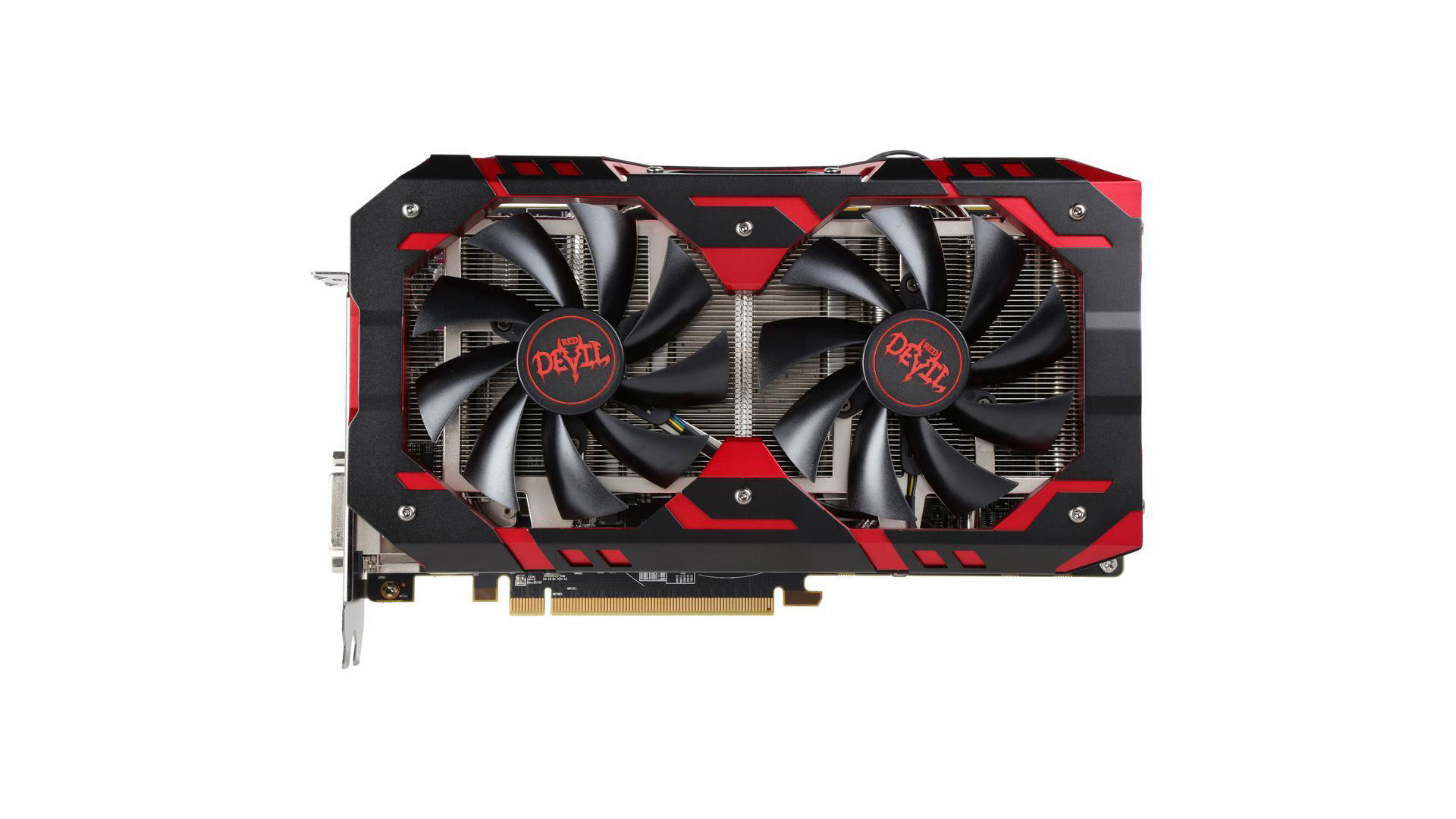
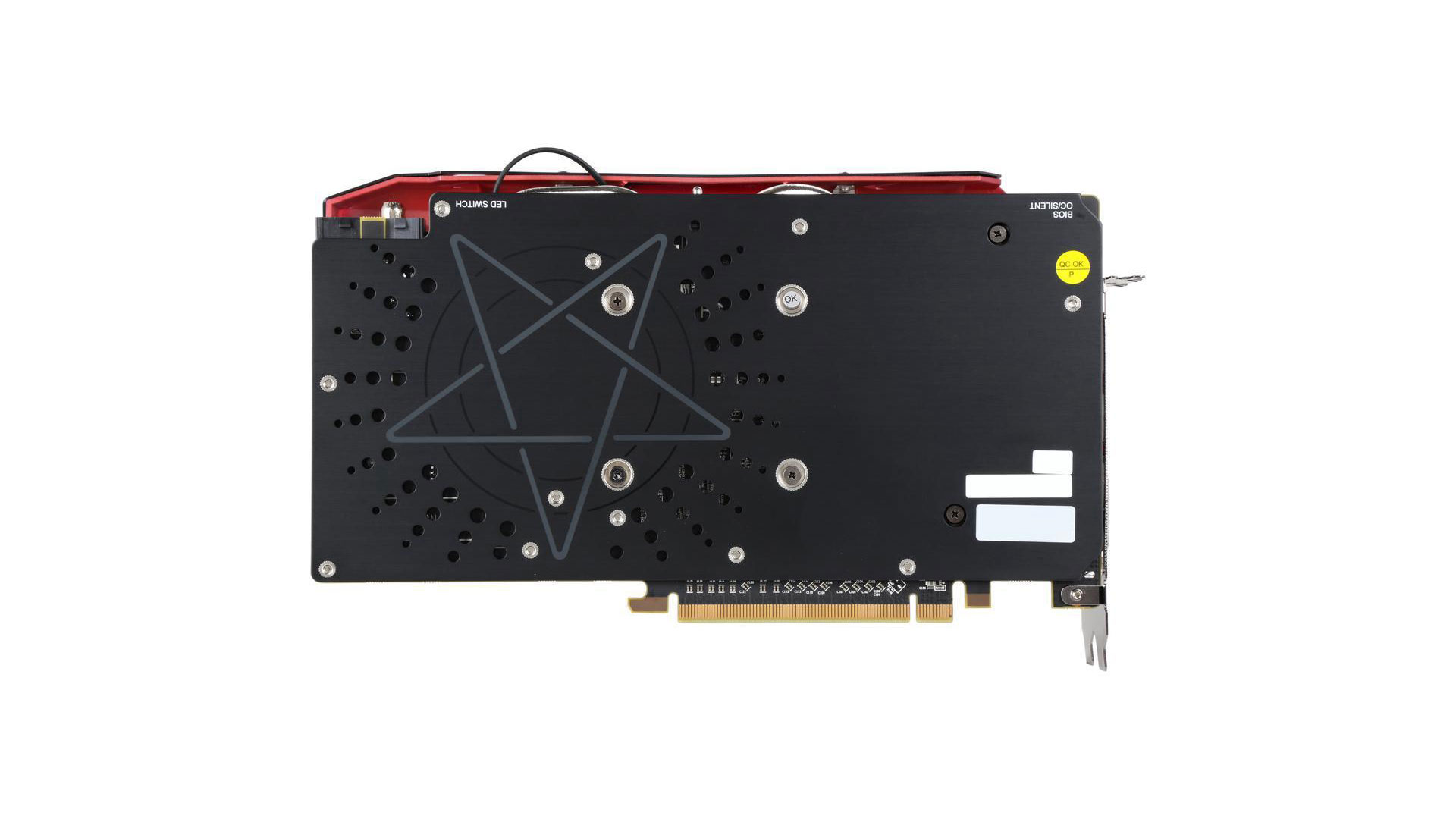
For our review, we accept the Radeon RX 580 Red Devil Gold Sample from PowerColor. It features a blackness metal back plate with a demonic aesthetic and a humongous cooler that comes in a black and red color scheme with Cherry-red Devil logos featured on the cooler fans and on side of the cooler shroud, the latter of which lights up when the bill of fare is running. The cooler features a large heatsink with five heat pipes and two fans making the entire carte du jour pretty huge, taking upward three total slots with a total height measurement of 46mm while the rest of the card measures 255mm in length and 157mm in width.
On the inside, the Radeon RX 580 Red Devil Golden Sample comes with 8GB of GDDR5 with a memory clock of eight.0Gbps or 2000MHz, a core clock of 1425MHz, and a TDP of 185 Watts. The menu likewise ships with two BIOS modes – an Ultra Overclocking mode and a Silent Overclocking mode. On the OC mode, the core clock speed runs at 1425MHz while it runs at 1411MHz on the Silent bios. It too features some of the same specifications every bit the RX 480, due to information technology keeping the same Polaris architectures, including 2304 GPU cores, 144 texture mapping units (TMUs), and 32 render outputs (ROPs).
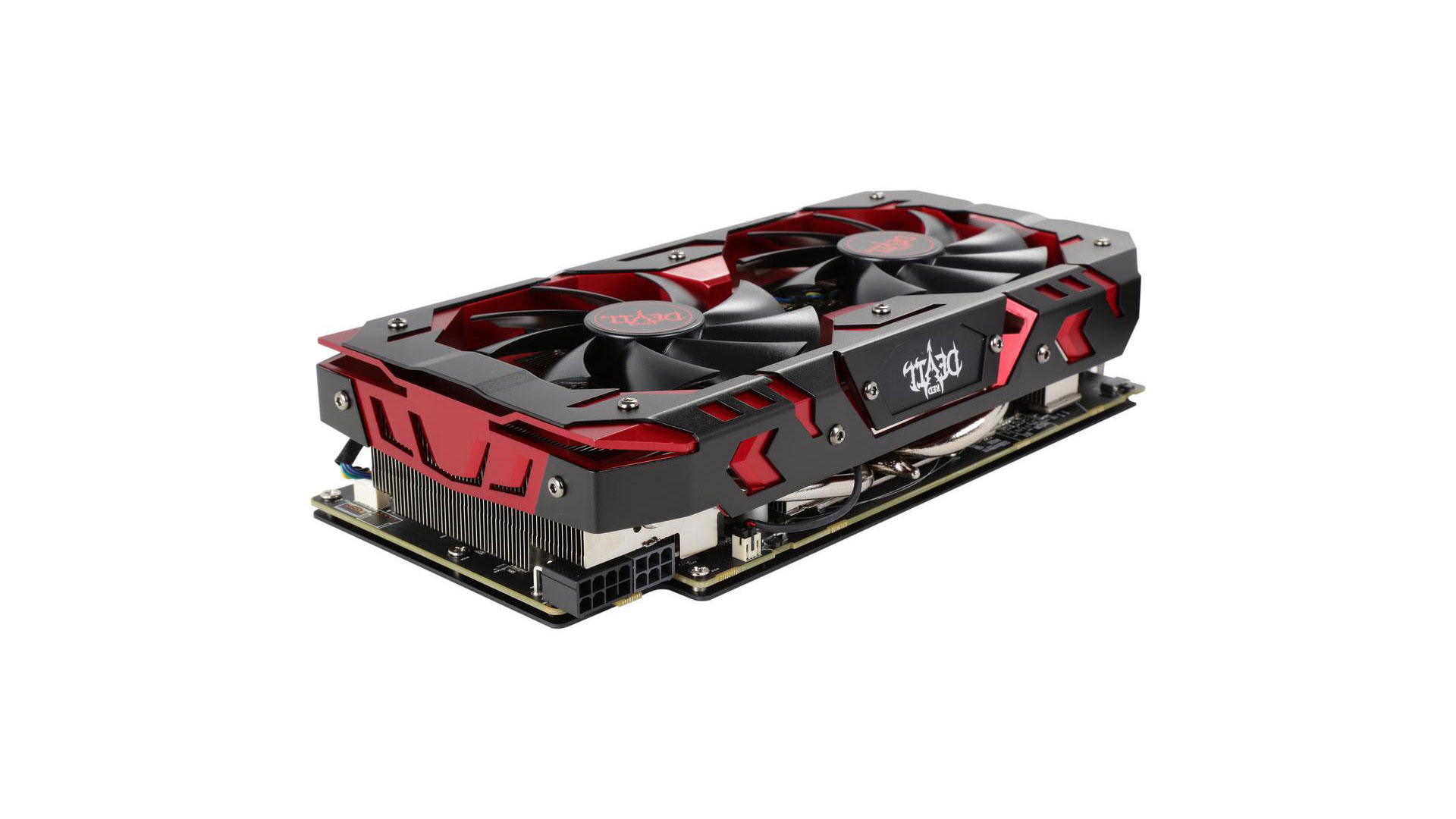
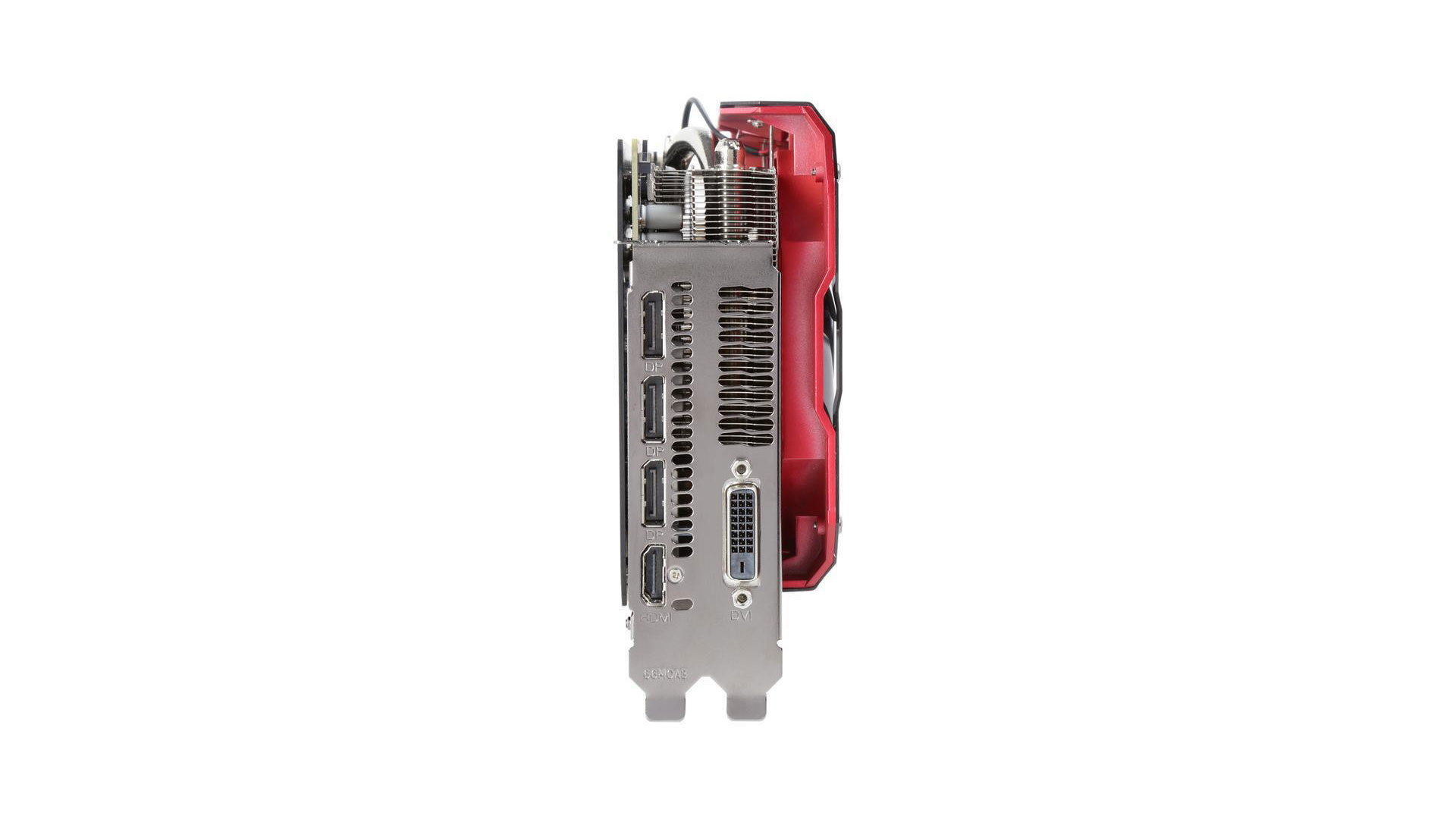
The Radeon RX 580 Red Devil Gilt Sample comes equipped with three DisplayPorts, ane HDMI port, and one Dual-Link DVI-D connector, giving users a lot of options for unmarried monitor and multi-monitor setups. While the RX 580 is more suited for those playing at 1080p resolution, the availability of 3 DisplayPorts allows users to too effort out gaming with the RX 580 in either 2K or 4K resolutions. Although it must be noted that the RX580 wasn't really designed for 4K gaming and won't perform very well under the resolution. Nosotros would've preferred if PowerColor included one more HDMI port in substitution for one of the three DisplayPorts to go far a fleck easier for users to connect multiple 1080p displays, which the RX 580 is more than suited for, without having to buy adapters for either a DisplayPort or the DVI-D connector.
We tested the Radeon RX 580 Cherry Devil Gold Sample using several synthetic benchmarks and existent-world tests. Our constructed benchmarks include 3DMark'south Burn Strike benchmark exam and the benchmark tools of Rise of the Tomb Raider, Ashes of the Singularity, Deus Ex: Flesh Divided, and Full War: Warhammer. We then compared our results to those attained from an NVIDIA GeForce GTX 1060 Founder's Edition, the closest counterpart of the RX 580, as well every bit a few other cards we've tested previously.
Here's our test setup for reference:
Motherboard: ASUS Prime X370-Pro
CPU: AMD Ryzen 5 1600X 3.7GHz
RAM: 16GB (8GBx2) G.Skill Trident Z RGB 2999MHz DDR4
Cooling: AMD Wraith MAX
PSU: Seasonic M12II Evo 620 Watts
Storage: HyperX Roughshod SSD (256GB)
OS: Windows 10 Pro
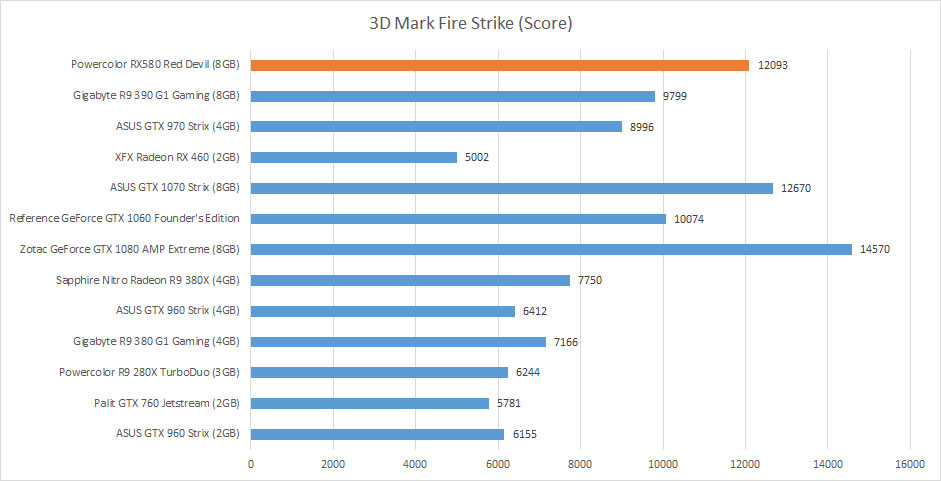
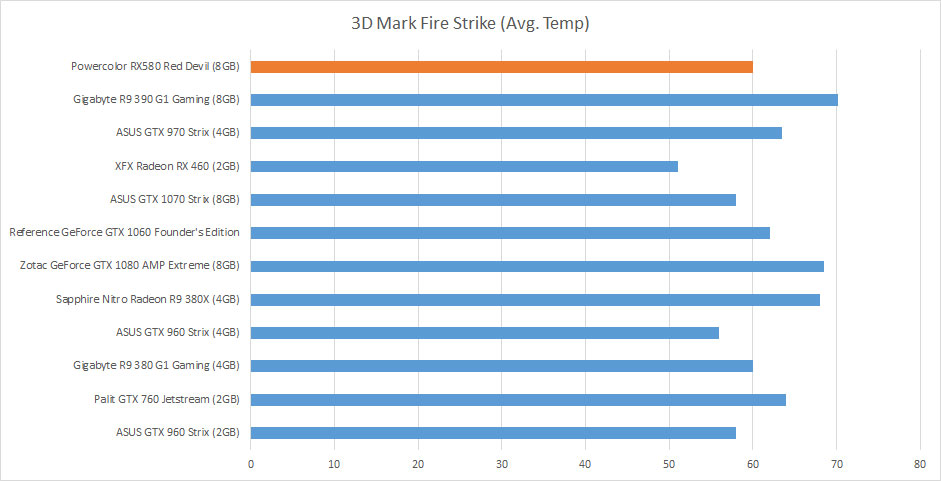
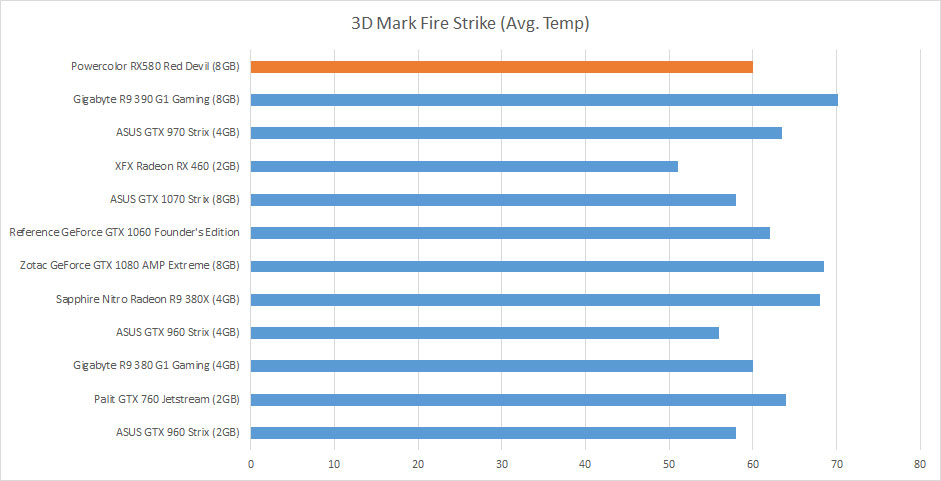
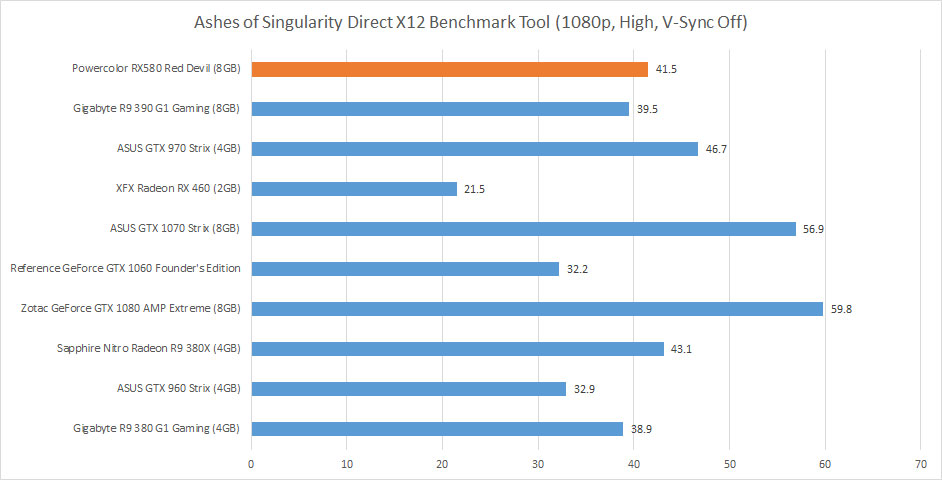
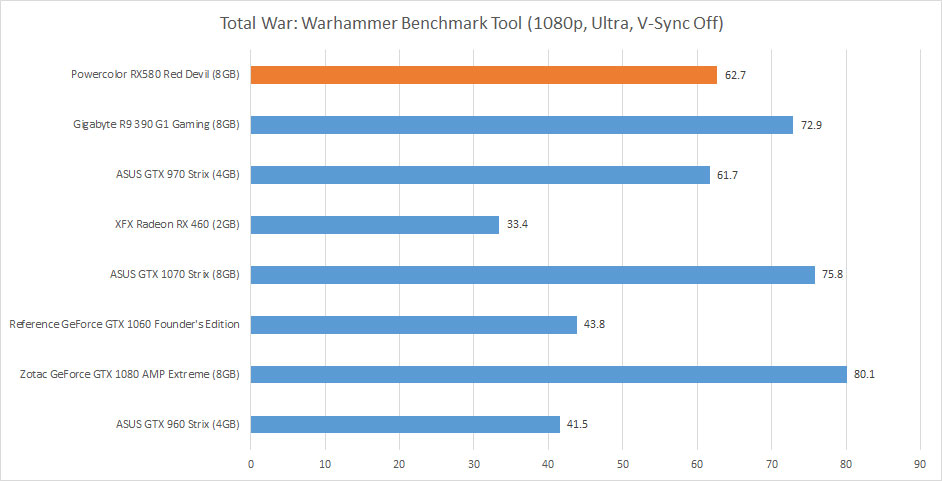
Our synthetic benchmarks showed very good results with the RX 580 beating out the GTX 1060 in our 3DMark Fire Strike examination with a score of 12093 versus 10074. It also surprisingly ran a fiddling colder with an average temperature of threescore degrees as opposed to the 62-degree average temperature of the GTX 1060. The RX 580 likewise outperformed the GTX 1060 in our other synthetic benchmarks with an average operation difference of 30%.
Conclusion
{rating}
The PowerColor Radeon RX 580 Red Devil Gold Sample is a pretty impressive card that sits correct in between the NVIDIA GeForce GTX 1060 and the GTX 1070 in both operation and price. While it doesn't have whatever luxury features like RGB lighting, the RX 580 Red Devil Aureate Sample comes with all the things that count including cracking performance and an excellent build quality. And while information technology'southward more than expensive than its predecessor, the improvements that accept been fabricated more than make up for the divergence in toll. The PowerColor Radeon RX 580 Ruby-red Devil Gilt Sample is undeniably a great bill of fare for those looking for a powerful mid-range video bill of fare without breaking the bank.
Red Devil Rx 580 Golden Sample,
Source: https://www.willwork4games.net/reviews/powercolor-radeon-rx-580-red-devil-golden-sample-review
Posted by: wilderdwass1984.blogspot.com


0 Response to "Red Devil Rx 580 Golden Sample"
Post a Comment